"Gone with the Fog" - Winner of the ArchTriumph Venice Biennale Pavilion 2013
By Bustler Editors|
Thursday, Oct 10, 2013
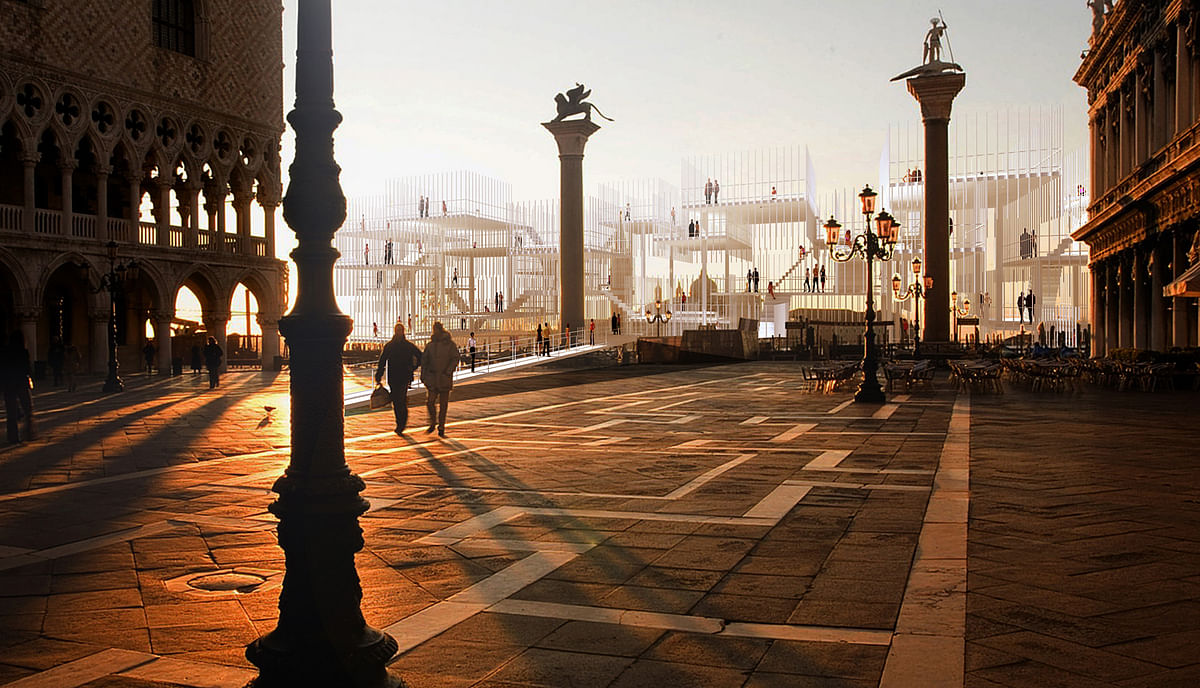
Related
"Gone with the Fog" by UK-based architect Leo Sooseok Kim of MEDIUS Architects recently won first place in ArchTriumph's Venice Biennale Pavilion 2013 competition this past August.
As described below, one unique aspect of the observatory pavilion is that it was inspired by a not-so-common association with the city of Venice: the fog. To add to this interesting source of inspiration, the structure also reflects the concept of sfumato -- meaning the pavilion doesn't look obstructive against the scenery of Venice and the St. Marco Square. At the same time, visitors on the observation deck are given clear views of the scenery around them.
Learn more about the winning project right below.
Design layout and concept:
"What is the first image of Venice? Many people only imagine the floating city itself. Someone thinks of archaic buildings and canals through the city. By the way, Venice has many historical stories that is going on till now. Johann Wolfgang von Goethe saw the sea for the first time in his life at Venice. Especially, he glorified the mystic atmosphere of Venice several times in his book 'Italian Journey'. He mentioned the fog at Venice as the medium that completes Venice itself. Have you ever felt the mood at sunset and rainy day at St. Marco Square? If you are there, you can feel everything of Venice. There are many elements, which make the mood, such as fog, small boats, and poles that fixed boats. This project began with this motive. How to reflect such elements to the pavilion? It should be gone with the fog like the being of nothing."
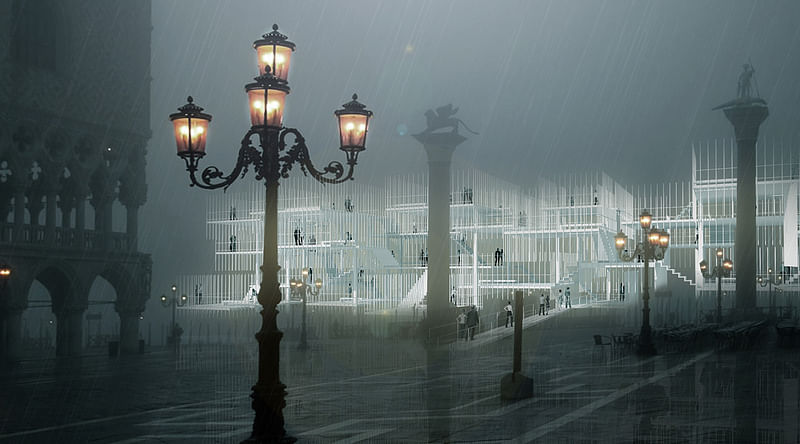
"At first, we started with the concept of the foggy day. The design intended to imagine the fog. All of this concept, the fog, is based on the ‘Sfumato’: It is a painting technique in which treats the boarder unobviously with similar colors, On the other hands, ‘Sfumare’, the verb of ‘Sfumato’, means that 'Gone with the Fog' (Figure 7). To reflect this concept, several slabs were adapted to contain visitors: each slab acts as a space for specific use such as gallery, display, and performances. These slabs are combined together with poles that make people to imagine the poles at the Venice harbor (Figure 2-‐1 and 2-‐2)."
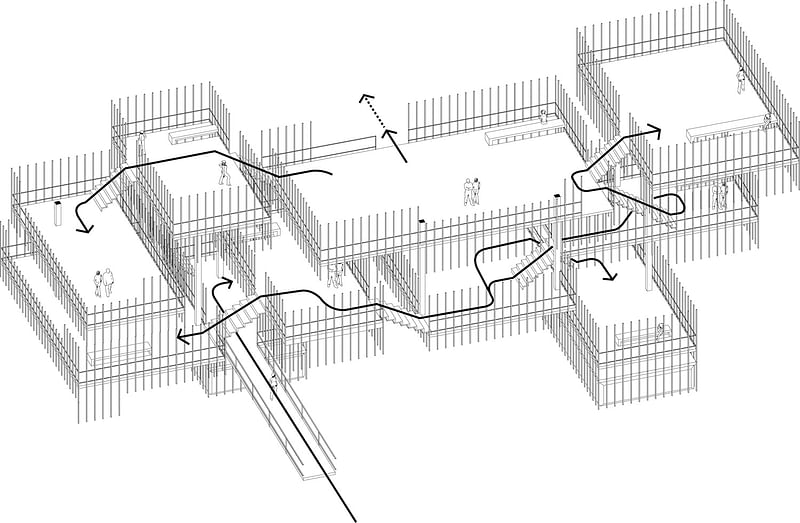
"The circulation starts on the ground level at the St. Marco Square. Visitors walk through the bridge between St. Marco square and the pavilion, then they starts their journey from the first level of the pavilion. They can access every direction by using staircases (Figure 3). The Pavilion functions as a observatory deck: visors can see the scenery of Venice harbor including St. Marco square in every direction without any disturbance visually (Figure 8). The other significant point is that pavilion does not disturb the view from St. Marco square toward the open sea. It acts kind of frame that contain and regenerate the new scene of the Venice through it (Figure 6)."
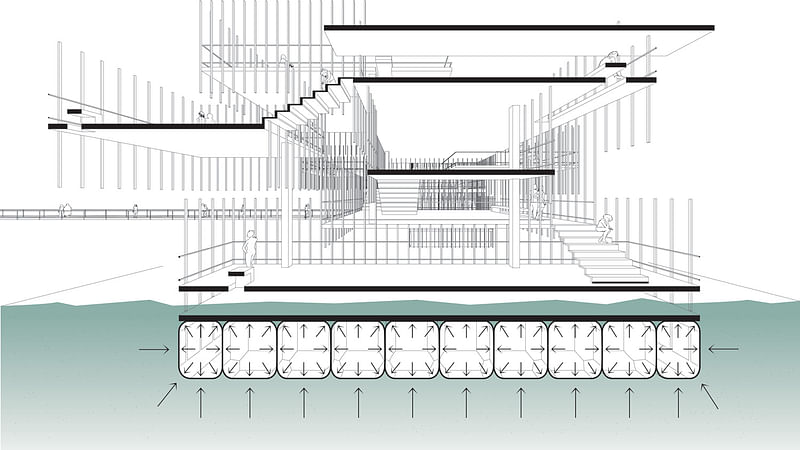
"There are three floating chambers that make it possible to float constantly in any climatic conditions on the sea. Each slab is balanced well not to make the pavilion to loss their direction. These chambers supply stable environment for visitors to stay long time of it in day and even in a midnight. One chamber consists of at least 30 parts of small chamber of 1.5 x 1.5m (Figure 4). This bundle of small chambers creates strong buoyancy enough to float the whole mass. Further, the materiality is also critical point: the main material of the pavilion is Aluminum frame which reducing total weight considerably."
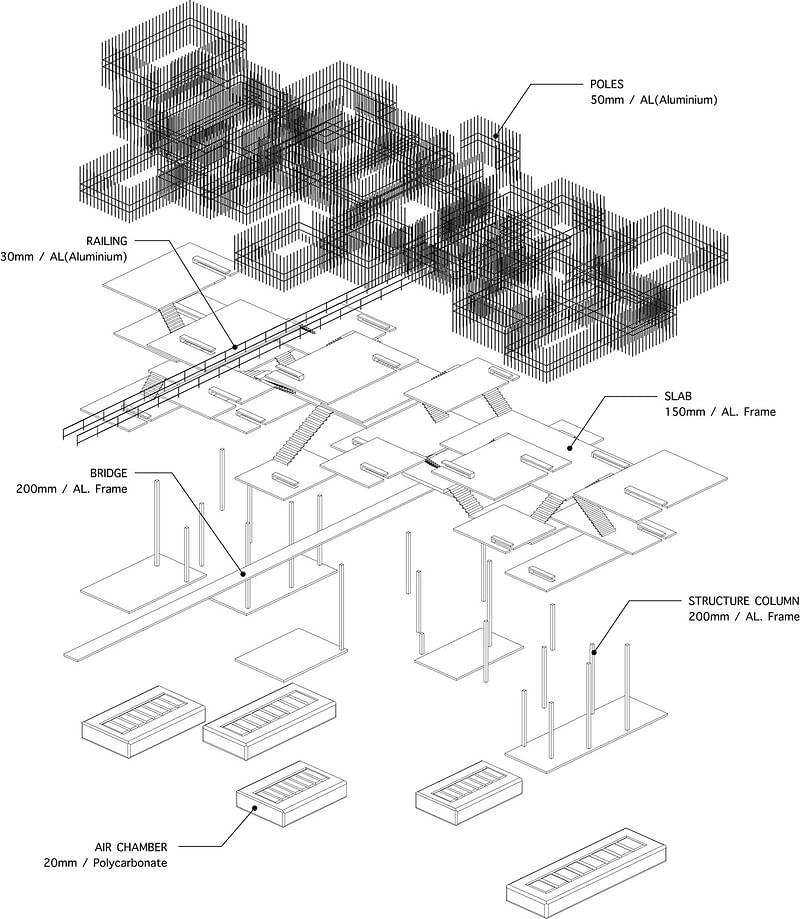
"Further, the pavilion is cost effective and easy to construct within very short duration. This is due to the fact that every part is prefabricated at the factory, then they are assembled at the site instantly: such a way guarantees the high-‐efficiency regarding maintenance. Another interesting feature of this pavilion is its flexibility: it can be transformed according the purpose of use. For instance, if they need some wide exhibition space on it, just combine several slabs together. Gone with the fog after using it is the final purpose of this pavilion (Figure 5)."
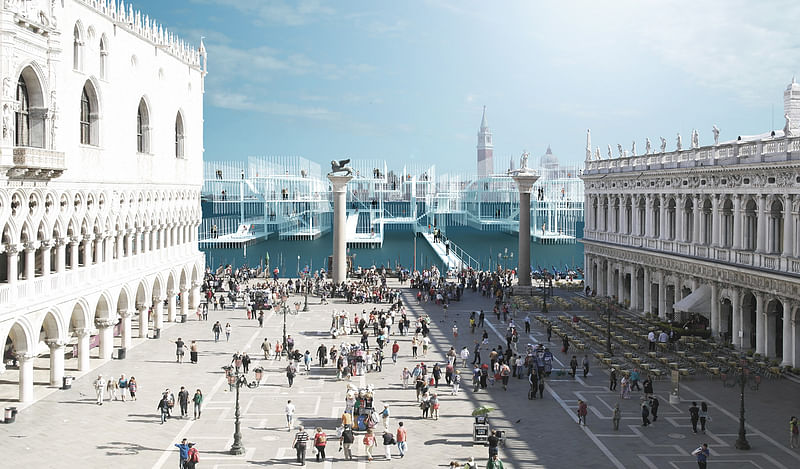
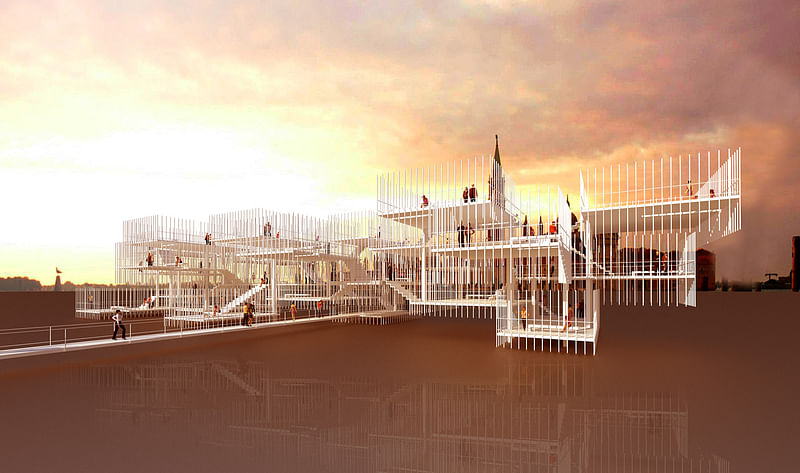
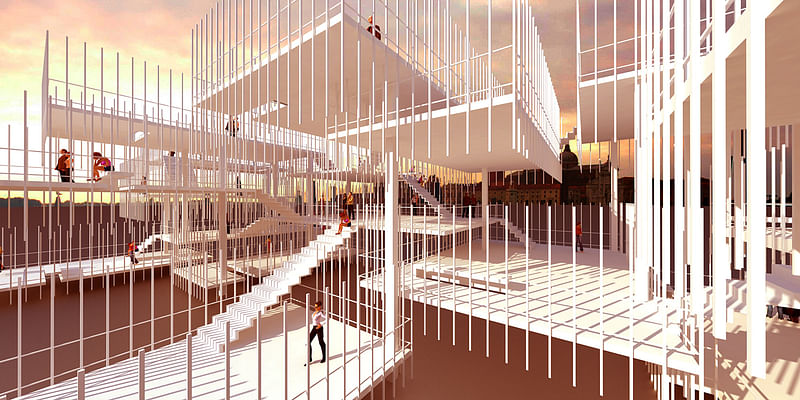

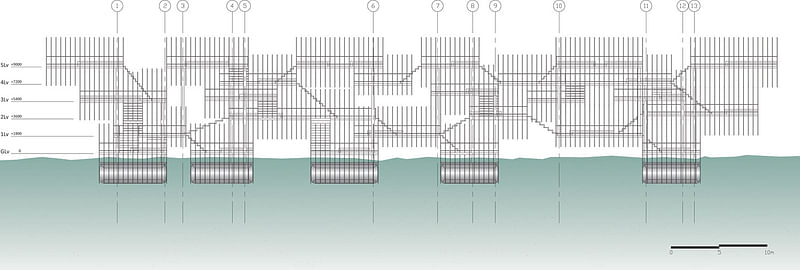
Project details
Name: ArchTriumph Architecture Competition 2013 – General Stage
Project: Venice Biennale Pavilion
Site: San Marco Square in Venice, Italy
Title of Project: Gone with the Fog
Site Use - Site Area (m²): Multipurpose
Building Area (m²): 1,440m²
Gross Floor Area (m²): 2,466m²
Building Coverage Ratio (%): N/A (on the Sea)
Gross Floor Ratio (%): 169%
Building Scale: N/A
Stories above Ground: 7 stories
Stories below Ground: N/A (on the Sea)
Structure: Aluminum and Stainless Steel Frame Structure
Maximum Height (m): 13m
Landscape Area: N/A (on the Sea)
Parking Lot: N/A (on the Sea)
Exterior Finish: Aluminum and Stainless Steel coated with waterproof painting
To see the complete list of winners and other info, click here.
All images courtesy of Leo Sooseok Kim.

Share
0 Comments
Comment as :